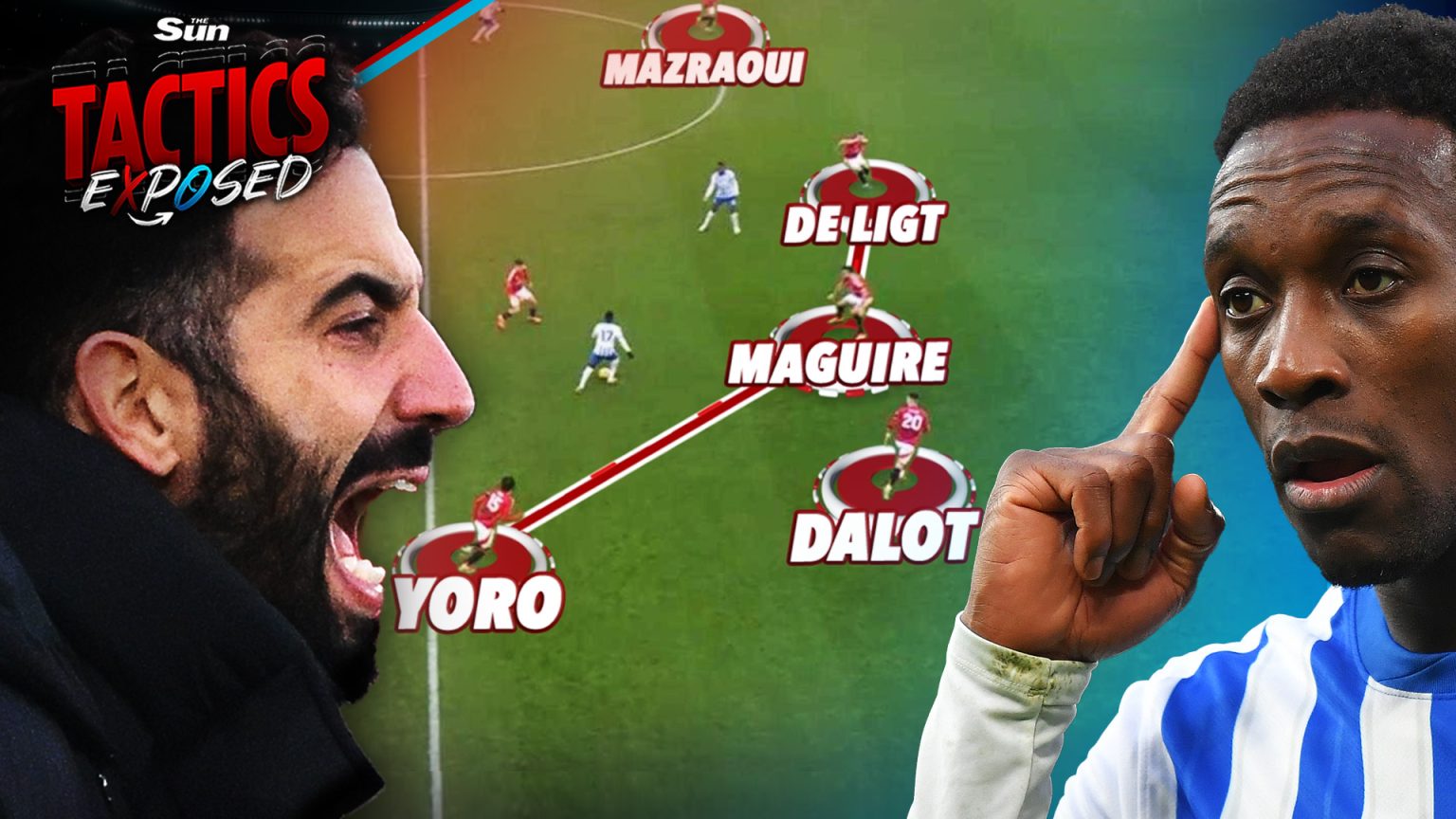Manchester United’s dismal 3-1 home defeat to Brighton exposed a myriad of tactical and individual flaws, prompting manager Ruben Amorim to label the current squad the worst in the club’s history. The loss marked their tenth league defeat of the season and their worst home start in over 130 years. A tactical breakdown reveals a chaotic defensive structure, a midfield overrun by Brighton’s superior tactics, and a goalkeeper prone to costly errors, all contributing to a performance that lacked cohesion and resilience.
Brighton’s astute 4-4-2 formation, with its dynamic strikers and marauding wingers, completely outfoxed United’s 3-4-3 system. Danny Welbeck and Joao Pedro, deployed as false nines, dragged United’s centre-backs, Matthijs de Ligt and Leny Yoro, out of position, creating vast spaces for wingers Kaoru Mitoma and Yankuba Minteh to exploit. This constant manipulation of United’s defensive line left Harry Maguire isolated and frustrated, highlighting the lack of communication and coordination at the back. The centre-backs’ inability to hold their positions effectively turned the defensive line into a disorganized mess, allowing Brighton easy access to dangerous areas.
United’s wing-backs were equally culpable, pinned back by the threat of Brighton’s wingers and seemingly lacking trust in their centre-backs’ ability to cover the spaces behind them. This defensive hesitancy prevented them from supporting the attack and further exacerbated the midfield’s struggles. The lack of clear instructions and coordination between the defence and midfield allowed Brighton’s midfield pivot, Carlos Baleba, to dominate the game, effortlessly dictating play and thwarting United’s attempts to gain control.
Despite being outnumbered in midfield, Baleba showcased a mature and composed performance, astutely choosing when to play direct passes to the wingers or retain possession. His ability to read the game and control the tempo highlighted United’s midfield deficiencies, with Manuel Ugarte and Kobbie Mainoo failing to establish a foothold in the game. Mainoo, in particular, seemed a shadow of his former self, struggling to impose himself and often caught out of position, leaving Ugarte exposed and allowing Brighton to bypass the midfield with ease.
Goalkeeper Andre Onana’s howler for Brighton’s third goal epitomized United’s collective failings. A seemingly straightforward cross was palmed directly into the path of Georginio Rutter, gifting Brighton a goal that effectively sealed the game. Onana’s hesitancy with the ball at his feet and apparent lack of trust in his defenders further hampered United’s ability to build from the back. This incident suggested a deeper issue with the team’s playing style, where the goalkeeper’s role as a ball-playing sweeper appeared stifled by the overall defensive insecurity.
The overall picture painted by the tactical analysis is one of systemic dysfunction. United’s players frequently found themselves out of position, a consequence of being drawn out by Brighton’s movement and a lack of clear tactical discipline. This positional chaos created a domino effect, where one mistake led to another, ultimately leaving the team vulnerable and disorganized. While individual errors undoubtedly contributed to the defeat, the underlying problem lies in the team’s lack of structure and cohesion, both in and out of possession. The solution, perhaps, lies in reinforcing basic positional discipline and establishing a clearer tactical framework that allows players to understand their roles and responsibilities within the system.











